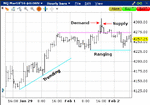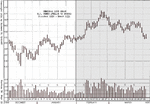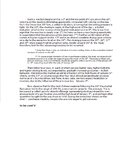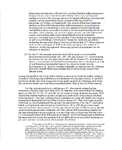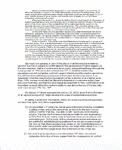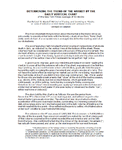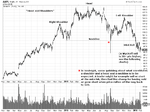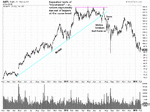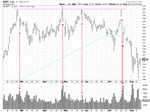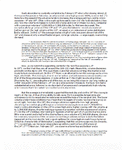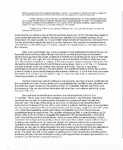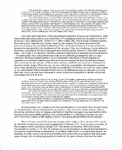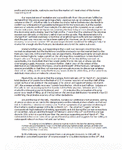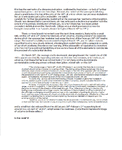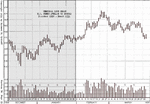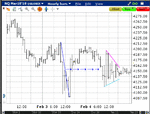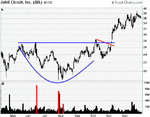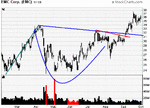The Basic Law of Supply and Demand
I had been in Wall Street 20 years when I discovered that it was possible to judge the future course of the market by its own action. In my book,
Wall Street Ventures and Adventures through Forty Years, I stated my experience and observations in 1909 as follows:
I saw more and more that the action of stocks reflected the plans and purposes of those who dominated them. I began to see possibilities of judging from the very tape what these master minds were doing. My editorial work was proving a most valuable means of self-education. In gathering material that would benefit my readers, 1 was actively searching out the stuff that would aid me personally. While my subscribers were given the best of what I collected, there was much in material discarded which helped to build up what I might call a code of enlightened procedure for use in this greatest of all the world’s games.
I had a friend who had been a member of the Exchange and who was well up on the technique of the market from the standpoint of the floor trader. We often discussed the difference between reading the tape simply to follow price changes (as most clients did) and reading the tape in order to judge the probable action of stocks in the immediate future.
Starting from the simple ground that the logical action of a stock was to decline when offerings exceeded the number of shares bid for, and to advance when the amount bid for was greater than the amount offered, we agreed that the quantity or volume of stock changing hands in each succeeding transaction was of great importance. Anyone who undertook to rend the minds of the momentary buyers and sellers was able to measure, to a certain degree, their eagerness or anxiety to buy or sell; also to measure the force of the buying power or selling power as shown by the number of shares; and to judge of the purpose behind the action, whether it was to buy without advancing the price, or to force the price up, or to mark it down, or to discourage buying or selling by others, as the case might be.
Each transaction carried with it certain evidence, although it was not always possible to interpret that evidence. All stocks no matter by whom they were owned, bought or sold, looked alike on the tape. But the purposes behind this buying and this selling were different and these might be fairly clear to those who understood market psychology.
Each transaction, although recorded only once, represented a meeting of minds; those of a buyer and a seller. This meeting of minds took place at a certain post on the floor of the Stock Exchange, even though the buyer might be in the far west and the seller in Europe.
Not all transactions were significant, but the interpreter must detect those which were. He must see that some indicated a purpose. Some one or some group was carrying, or attempting to carry, something through. He must take advantage of that.
Continuing my studies of the tape, I realized that the Basic Law of Supply and Demand governed all price changes; that the best indicator of the future course of the market was the relation of supply to demand.
The Law of Supply and Demand operates in all markets in every part of the world. When demand exceeds supply, prices rise, and when supply is greater than demand, prices decline. This is true not only of stocks; it is constantly being demonstrated in markets for wheat, corn, cotton, sugar and every other commodity that is bought and sold; also, it is reflected in other markets such as real estate, labor, etc.
I demonstrated this further in a series of articles entitled: “Studies in Tape Reading” which attracted wide attention as the first of their kind ever published anywhere, as far as I knew.
My basic idea in this series was that
the stock market, by its own action, continually indicates the probable direction of its immediate and future trend, and anyone able to determine this with accuracy should attain success in trading and investing. [emphasis mine]
Coming events, I claimed, were foreshadowed on the tape because large interests there disclosed their anticipation of advances or declines by their purchases or sales. So, too, with the large speculator who was endeavoring to raise or depress prices. If one were to become sufficiently expert, he could judge by the action of stocks what was in the minds of these large interests and follow them.
The trend was simply the line of least resistance. When a stock met opposition in its rise, it must either be strong enough to overcome this resistance (selling) or it must inevitably turn downward, and when, in its downward course, sufficient buying was encountered to halt the decline, it would turn upward. The critical moments in all these various phases of the market were these minor and major turning points, or else the points where the price broke through the opposition into a new field.
Further development of this method of judging the market from its own action resulted in my using it as a basis for predicting the probable course of the market, and this eventually led to my issuing weekly, “The Trend Letter” (first published in 1911) which had a most successful career for many years. In fact, the forecasts contained in this Letter were so accurate that a large following was developed. As a result of a series of successful campaigns we were not only overwhelmed with business but brokerage houses throughout the country passed along these recommendations to their clients. So many followers were gained that an undue effect was had on the quotations for the stocks in which they traded, and in certain cases the effect on the market was important.
My reason for mentioning these facts is to show that this method of judging the market by its own action was highly successful from the standpoint of profits realized for subscribers who followed my advices, as well as for many thousands of people who were not subscribers but who bought and sold when we did.
From the above you may judge how vital it is in the stock market, as in every field, to operate with the proper principles. (Richard Wyckoff)

